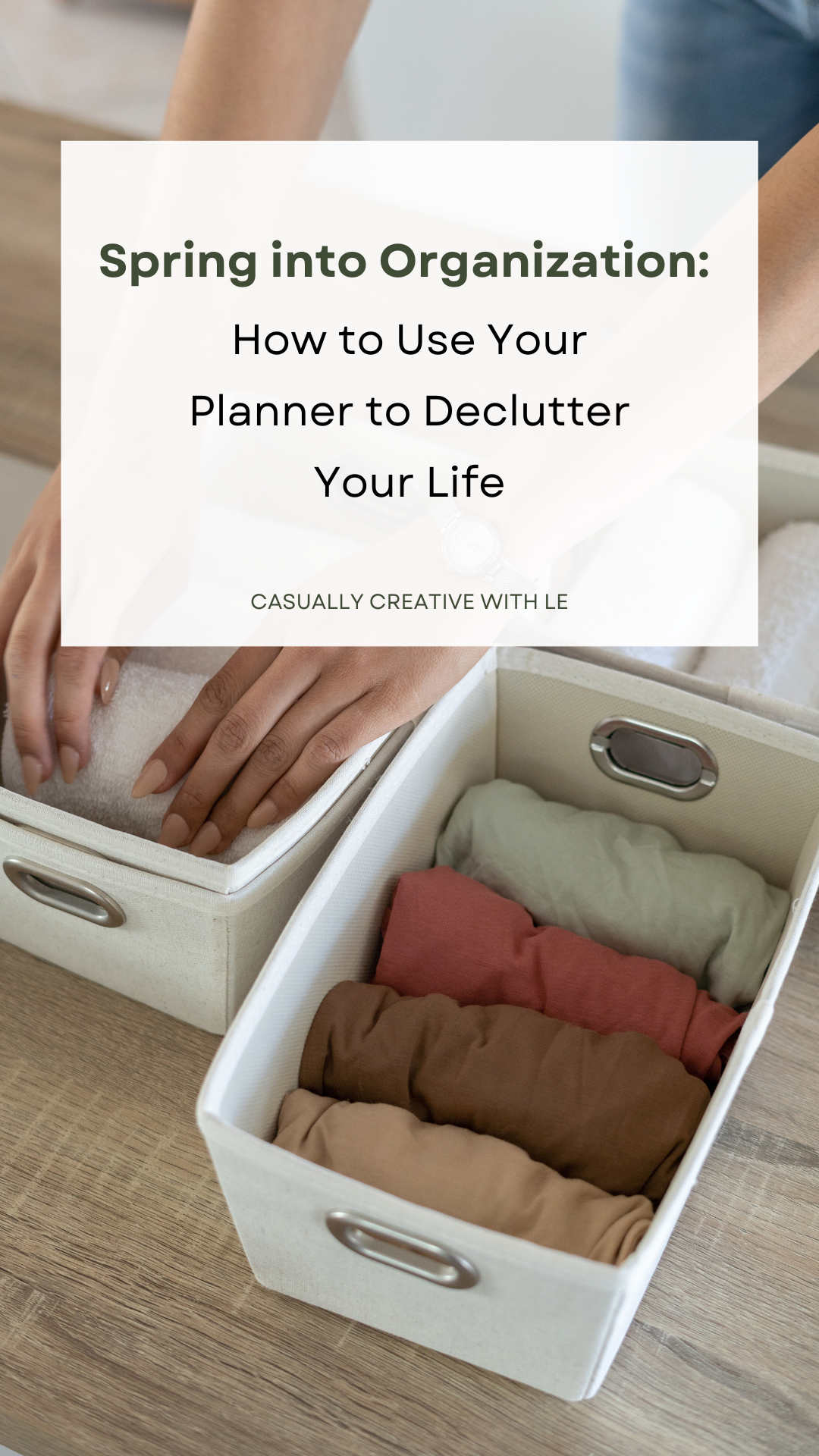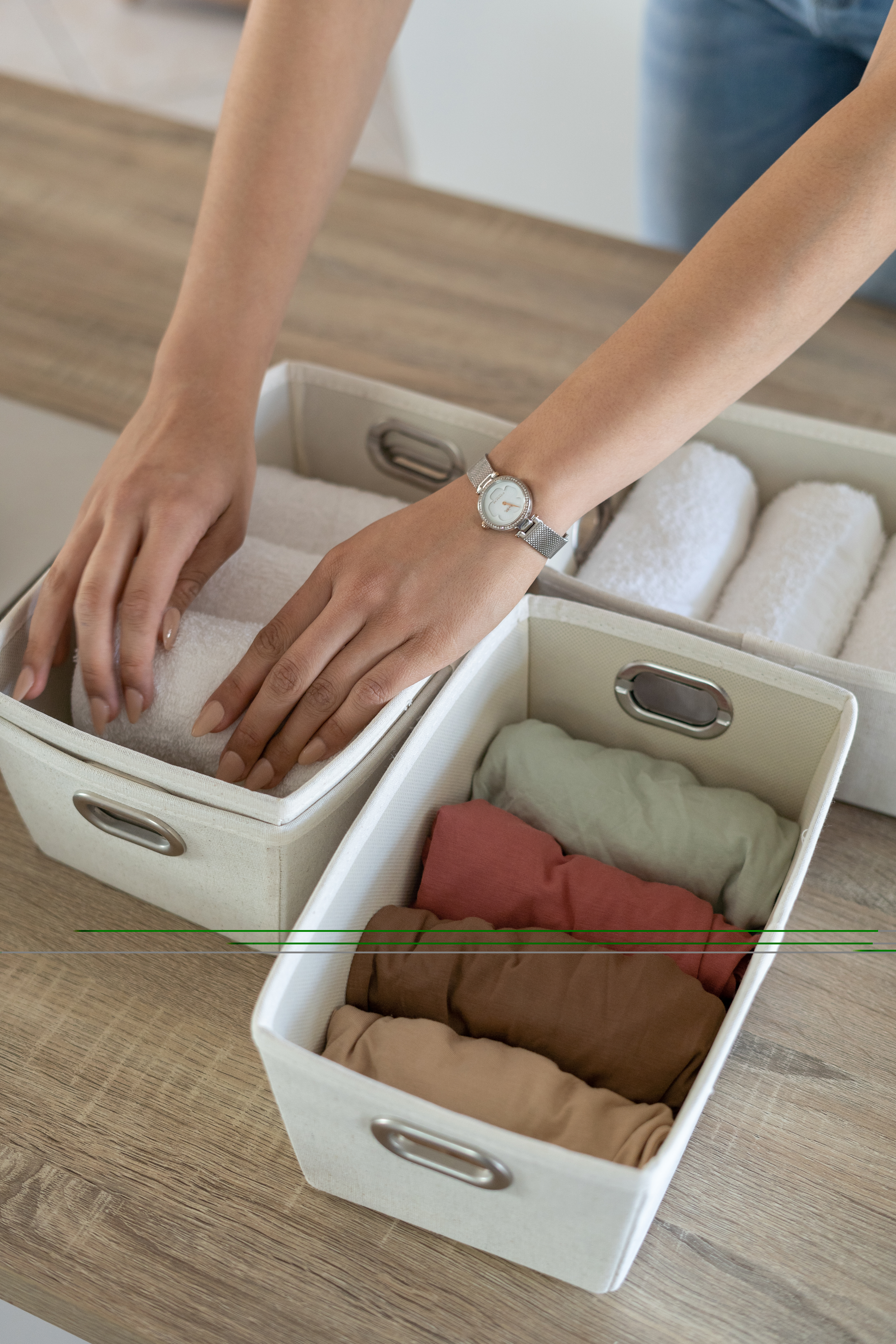As the days get longer and the sunshine warms our spirits, thoughts naturally turn to the annual ritual of spring cleaning – a time-honored tradition that seamlessly intertwines with the art of decluttering and organizing. And in this seasonal pursuit, what better ally exists than your trusty planner?
Your planner is more than just a place for appointments and reminders – it’s a tool for transformation. By harnessing its power, you can turn your aspirations for a clutter-free life into actionable steps and tangible results.
Spring cleaning isn’t merely about scrubbing surfaces or purging closets; it is a time to reassess our surroundings, evaluate what serves us, and let go of what no longer brings joy or purpose.

Real quick before we start, remember spring cleaning doesn’t have to be reserved for a daunting + overwhelming weekend! Instead of tackling everything immediately, consider spreading your efforts over several weeks. Dedicate each week to a specific area or aspect of your home and life, allowing you to focus your energy and attention without feeling overwhelmed.
Your planner is invaluable in this process, providing structure, organization, and motivation. Use it to set clear goals, plan out your decluttering schedule, and track your progress along the way.
Now, read on as I share how to seamlessly integrate decluttering tasks into your planner, empowering you to reclaim space, time, and peace of mind.
Week 1: Assess and Set Goals

Begin your decluttering journey with clarity and purpose. Dedicate the first week to assessing your current clutter situation and setting achievable goals. Utilize a dedicated section of your planner to outline these goals, identifying areas needing attention – from overstuffed closets to chaotic digital folders. Break down your goals into manageable tasks, ensuring specificity and clarity. This is a great project to add to your ‘Currently Page’ in your planner if you are a Happy Planner girl. You can always refer to this page for your overall decluttering plan.
For instance, if your goal is to declutter your wardrobe, tasks may include sorting clothes by season, donating items no longer in use, and organizing accessories. Assign deadlines to each task to maintain accountability and motivation. Your planner becomes your guiding compass, leading you toward a clutter-free closet once and for all (until next year, lol.)
Week 2: Decluttering Zones

With your goals established, it’s time to implement your plans. Allocate time each day of the second week to a different decluttering zone, whether it’s your bedroom, kitchen, or home office. Integrate these zones into your planner’s weekly layout, allocating space for tasks and notes.
Begin by defining a specific focus for each zone – for instance, if you’re tackling the kitchen, you might concentrate on organizing cabinets one day and decluttering the refrigerator the next. Utilize checkboxes or trackers to monitor your progress, celebrating each accomplishment. You maintain momentum and prevent overwhelm by breaking the decluttering process into manageable zones.
Week 3: Digital Detox

Often not mentioned in spring cleaning, but in an age dominated by digital clutter, addressing virtual disarray alongside physical clutter is essential. Dedicate the third week to a digital detox, clearing out the virtual clutter lurking in your inboxes, hard drives, and cloud storage. Block out time in your planner for tasks such as unsubscribing from email lists, organizing digital files, and deleting redundant apps.
Create a digital decluttering schedule for each task, designating specific days and times. Utilize your planner’s note pages to record essential login information, passwords, and digital organization strategies. Recognize the significance of tidying your digital space in enhancing mental clarity and productivity.
Week 4: Establish Systems

Decluttering isn’t just about discarding excess belongings – Ideally, it’s about implementing systems that prevent clutter from accumulating. Use the fourth week to establish organizational systems tailored to your lifestyle. Dedicate a section of your planner to documenting these systems, whether a daily cleaning routine, a meal planning template, or a workflow for managing paperwork. Think about what worked this month. What would you do differently next time?
Provide detailed instructions and schedules to ensure consistency and effectiveness. Consider incorporating reminders to review and refine these systems periodically, acknowledging the evolving nature of your needs. Your planner evolves into a repository of wisdom, capturing the strategies that streamline your life and maintain order in the long run.
Incorporating decluttering tasks into your planner transforms abstract goals into actionable steps and tangible results. You reclaim control over your space, time, and peace of mind by dedicating weekly time to assess, declutter, and organize different aspects of your life. So, let your planner guide you as you spring into the organization and strive toward a clutter-free life. With its structured layout and ample space for notes, your planner becomes more than just a tool – it becomes a companion on your path to a simpler, more fulfilling life!